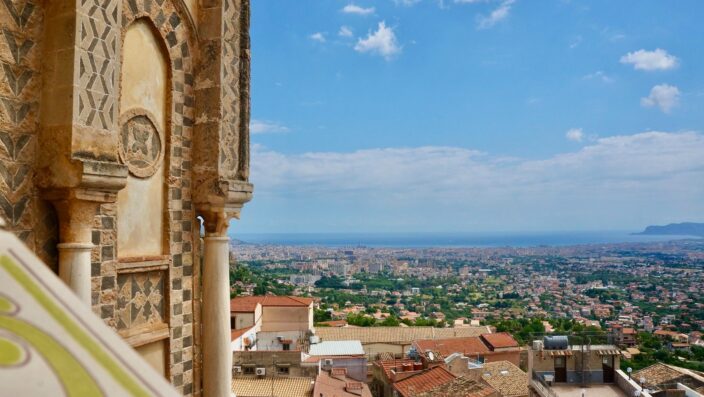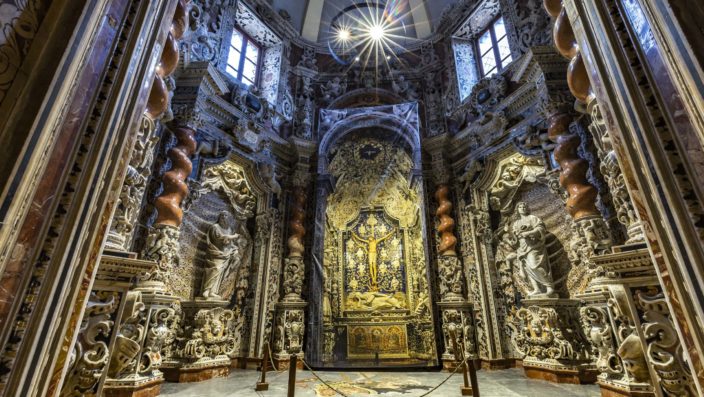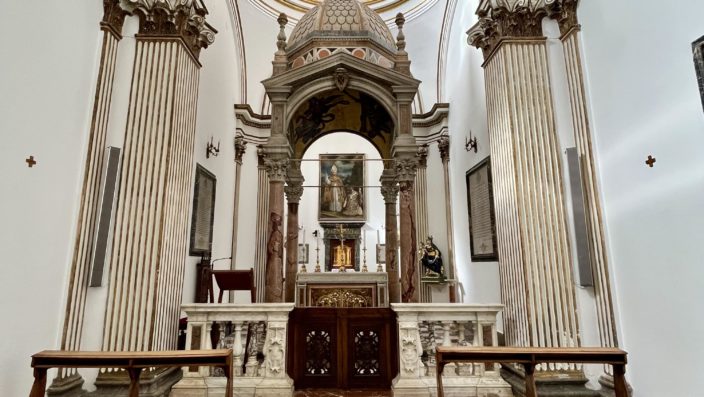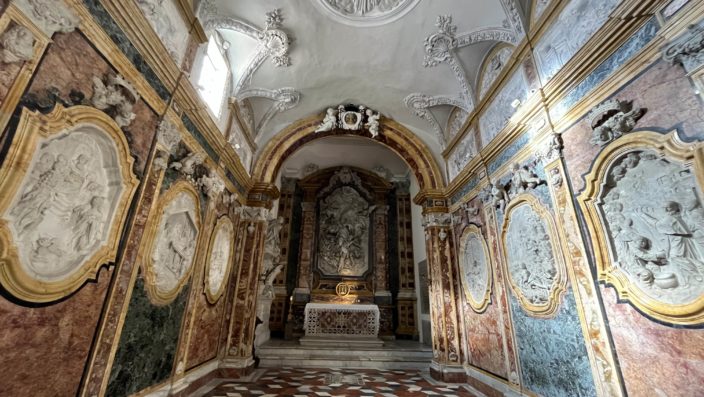The entire Benedictine complex was built by the will of Guglielmo II of Altavilla, known as the Good, of Norman origin, king of Sicily from 1166 until his death, in 1189.
There is a legend about the foundation of the monumental complex of Monreale in which data of reality and elements of myth and religion are mixed.
According to the legend, during a hunting trip the young king fell asleep under a tree. The Holy Virgin appeared to him in dream and revealed to him the place where a great treasure was hidden. After this revelation, the king decided to erect a temple dedicated to the Virgin Mary, which in fact is still today consecrated to Santa Maria la Nuova.
The construction of the Cathedral, conceived as the church of the annexed Benedictine abbey, started in 1172 and ended in the last decade of the 12th century, in 1185.
However, the solemn consecration of the Cathedral took place only under the reign of Carlo d’Angiò, in 1267, almost a century after the work began.
The floors of the naves were made around the mid-16th Century, and in the 1590 started the construction of the Chapel of San Castrense, located next to the right aisle of the Cathedral. In the same period the tomb of Guglielmo II was placed to the right of the presbytery, close to the one of his father.
In 1658 the wall that used to divided the aisles from the presbytery, and delimited the two areas occupied by the faithful and by the monks and clergy, was removed.
In 1687 started the construction of the Chapel of the Crucifix, located at the end of the left aisle; during the XVIII century were built the Chapel of San Benedetto, located between the right aisle and the transept, and the new high altar.
In 1811 a fire caused the collapse of the roof, the destruction of the choir and other serious damage. A few years later, given the importance of the building, King Ferdinando of Borbone, ordered the appropriate work of repairs and renovations.
Externally you can admire the three apses completely decorated by the architectural elements obtained by crossing blind pointed arches of different heights and enlivened by the color contrasts provided by the brown-golden limestone of the apse, by the gray-black lava tuff of the decorative ribs (from Vesuvius) and the red bricks used for the horizontal bands.
The facade of the Cathedral is closed between two corner towers, one (the bell tower) lower than the other, due to having been partially knocked down by a lighting bolt in 1807. A large clock with the inscription “tuam nescis” stands out on it; between the two towers there is the portico, erected in 1770.
Inside the portal, richly decorated with architectural frames, is the large bronze door by Bonanno Pisano, built in 1186, with two doors divided into forty-two panels, which illustrate episodes from the Old and New Testament; four other panels, below, depict pairs of lions and griffins.
On the northern side there is another double bronze door, made by Barisano da Trani, smaller and a little later in the years (around 1190) than the one of Bonanno da Pisa . Each shutter is divided into fourteen panels with three episodes from the life of Jesus, alternating with battle scenes and episodes from the lives of saints, animals, plants and rosettes.
The Cathedral is 103 meters long, 40 wide and about 30 high. The mosaics occupy 6.400 square meters of surface and completely cover the walls of the church, and part of the flooring.
The building is divided into three naves, of which the central one is twice as wide as the lateral ones, separated by nine columns on each side and eight pointed arches.
The most striking works are the wall mosaics that cover the naves, apses, arches, under-arches and the counter-façade.
The mosaic decoration is the largest in Italy and was probably created between 1180 and 1190 by several Byzantine mosaicists, flanked by workers from other schools, following a project of profound poetic unity that shows a precise logic both in the stages figurative both from the theological-dogmatic point of view, with many moments from the Old and New Testaments that culminate in the central apse with the suggestive vision of Christ Pantocrator.
In 2015 the Cathedral of Monreale and the Cloister of the Benedictines became part of the Unesco World Heritage Site; among the reasons for this recognition appears the synthesis between western cultures, Islamic and Byzantine, but also the testimony of a fruitful coexistence of peoples of different origins and religions.



